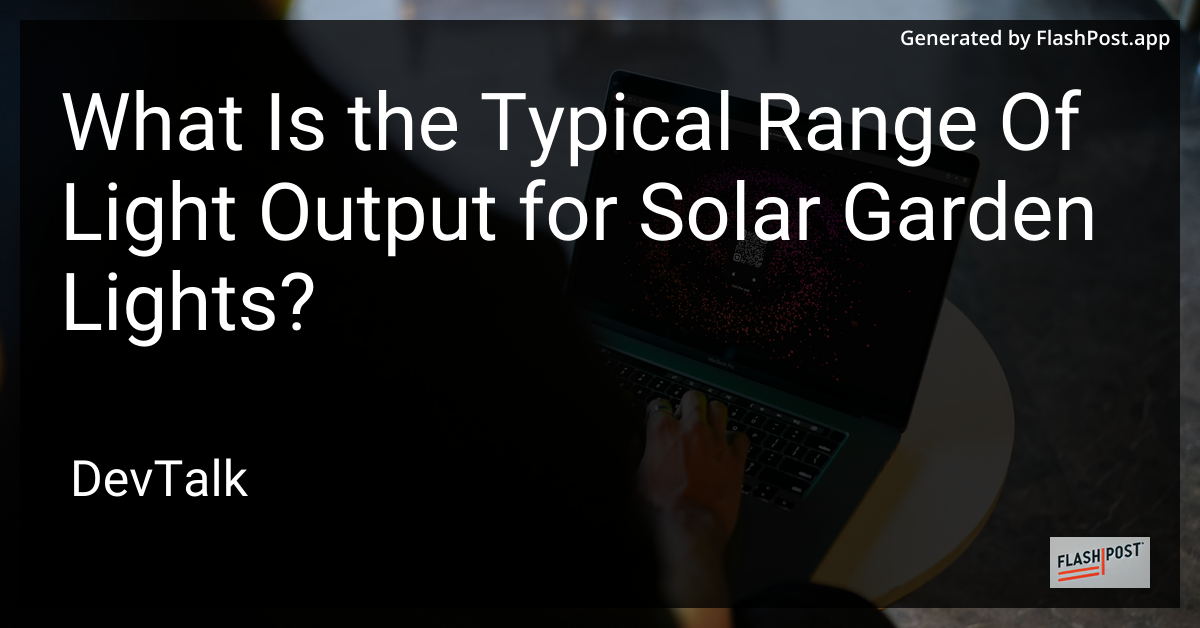What Is the Typical Range Of Light Output for Solar Garden Lights?
 # What is the Typical Range of Light Output for Solar Garden Lights?
# What is the Typical Range of Light Output for Solar Garden Lights?
Solar garden lights have become a popular choice for homeowners looking to enhance their outdoor spaces in an eco-friendly way.
When considering these lights, one of the key aspects to examine is their light output. But what is the typical range of light output for solar garden lights?
Understanding Light Output
Light output is generally measured in lumens, a unit that describes the amount of visible light emitted by a source. For outdoor solar lighting, lumens indicate how bright the light will be. This is a crucial factor to consider because it affects the effectiveness and ambiance of your outdoor environment.
Typical Lumen Range for Solar Garden Lights
Solar garden lights come in a variety of lumen outputs, each suitable for different applications and preferences. Here's a breakdown of typical ranges you might encounter:
-
Low Lumens (1-15 lumens): Lights in this range provide a soft, ambient glow, ideal for mood lighting along pathways, gardens, and driveways. They are not designed to illuminate large areas but are excellent for creating decorative accents.
-
Moderate Lumens (15-30 lumens): These lights offer a slightly brighter output, making them suitable for lighting up small garden features, low shrubs, or edge lighting. They strike a balance between aesthetic appeal and functional lighting.
-
High Lumens (30-100 lumens): High lumen solar garden lights are designed to provide sufficient brightness for safety and security purposes. They can illuminate larger areas and are suitable for task lighting around patios, decks, and entrances.
Factors Affecting Light Output
The light output of solar garden lights can be influenced by several factors, such as:
-
Solar Panel Efficiency: The efficiency of the solar panel determines how much sunlight is converted into usable energy. High-efficiency panels can maintain more consistent lighting.
-
Battery Capacity: A larger battery capacity will store more energy, allowing for brighter and/or longer illumination periods.
-
Quality of LEDs: The quality of the LEDs used in the lights affects brightness and energy consumption. Higher quality LEDs produce more lumens per watt.
-
Weather Conditions: Solar garden lights rely on sunlight, so weather conditions such as cloudy days or shading can affect the overall light output.
Optimizing Your Solar Garden Light Setup
When setting up solar garden lights, it's essential to consider placement and the specific lighting needs of your outdoor area. Assess the area during different times of the day to ensure that your solar lights receive adequate direct sunlight.
For those looking into broader solar solutions, such as residential panels, understanding the installation timeline might be beneficial. Furthermore, exploring the durability of solar-powered devices can provide insights into the longevity of your investment. If you're considering professional assistance in a specific region, researching solar panel services in North Dakota might be helpful.
Conclusion
The typical range of light output for solar garden lights varies depending on their purpose and design. Understanding these ranges and the factors influencing them will help you make informed decisions to achieve the desired ambiance and functionality in your outdoor spaces. Choosing the right solar garden lights can transform your garden into a beautifully illuminated escape while promoting sustainability.